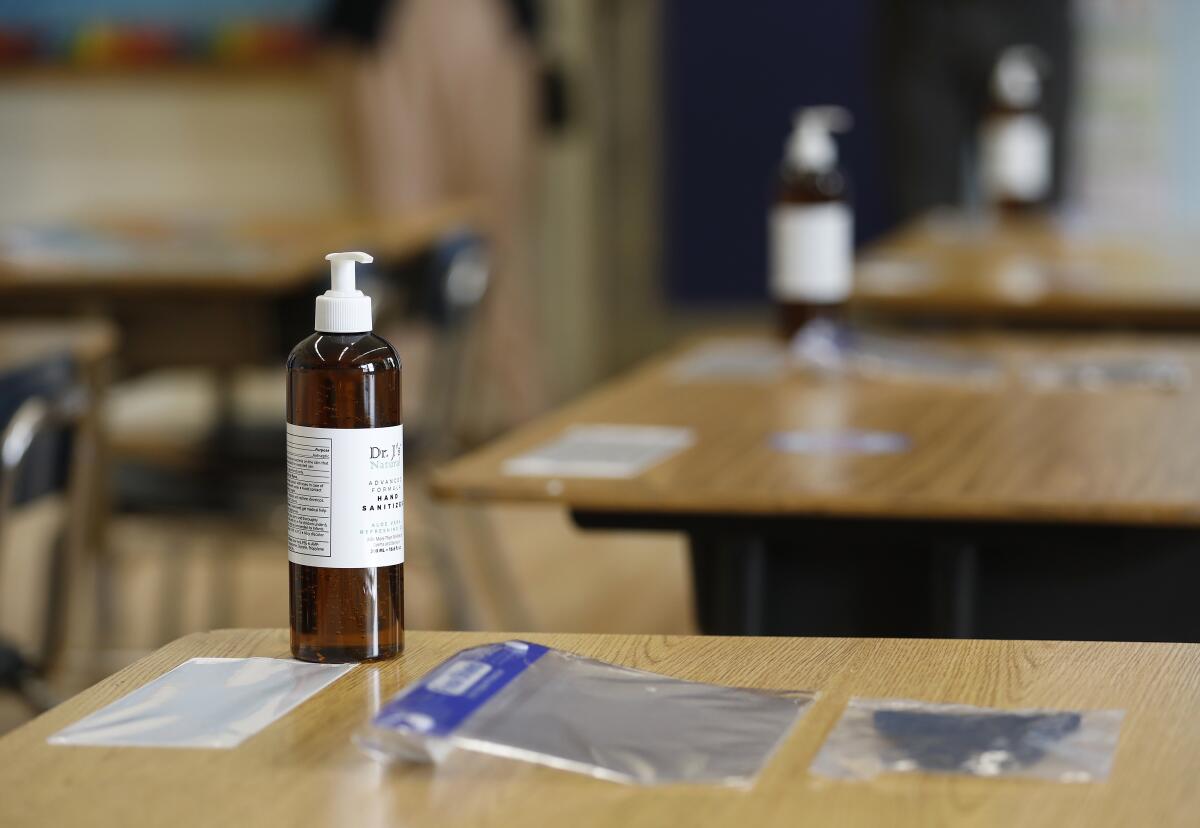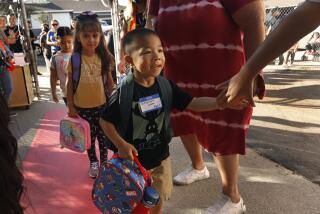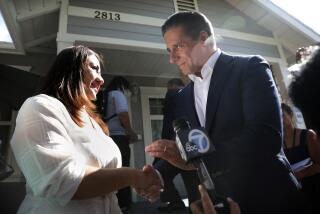Less than a third of students likely to return to LAUSD campuses, survey shows

- Share via
Parents of fewer than 1 in 3 students said they are ready to send their children back to Los Angeles school district campuses, a reluctance fueled by lingering health concerns as well as confusion and dissatisfaction with the in-person academic program being offered.
To build up family trust, L.A. Unified School District officials have been holding online “town halls,” while principals are meeting with parents. And on Monday, Supt. Austin Beutner announced that, starting April 5, adult family members will be offered vaccines at Lincoln High School on the Eastside and Washington Preparatory High School in South Los Angeles.
Beutner also set the week of April 12 for elementary school reopenings, starting with 60 campuses, with hundreds of others to follow the next week.
The low projected numbers of those returning are based on the results of a district survey — which has been extended beyond the original March 19 deadline. As of Monday afternoon, about 62% of families had responded. Families who don’t respond will have their children assigned to remain in distance learning for the rest of the academic year.
Of those families who submitted a survey, fewer than half opted for a return to campus. When those who are returning are juxtaposed against the total enrollment of 465,000 students in kindergarten through 12th grade, the numbers are stark: 33% of elementary school students would return, 21% of middle schoolers would and 14% of high schoolers would.
Parents in the more affluent Westside L.A. are about twice as likely to return their children to an elementary school campus as those in low-income MacArthur Park, South Los Angeles, Panorama City or Koreatown. The COVID-19 death rate is almost five times as high in MacArthur Park as in West L.A., while the vaccination rate is half as much, according to data provided by L.A. Unified.
“What we’ve heard so far identifies a big concern, which arises from the disproportionate impact the virus is having on many of the communities we serve,” Beutner said in his weekly Monday broadcast. “This is an urgent challenge for all of us to address, not just those who work in schools. The best learning for most students happens in a school classroom, and some children may face a lifetime of consequence if they’re not back in a school classroom sometime soon.”
Kahllid Al-Alim is going to keep his children at home. He has a senior at Dorsey High in South Los Angeles, a freshman at Bravo Medical Magnet High School on the Eastside and an 8th-grader at Bancroft Middle School in Central L.A. Al-Alim, a DWP construction worker and his wife, a home healthcare aide, both came down with COVID-19. They don’t know how they got it, but it was not from each other, Al-Alim said. By taking precautions at home, the family managed to keep the illness from the children.
It could have been worse — both parents recovered without hospitalization — but “that really informed our thinking as to why we wanted to keep my children at home,” Al-Alim said. “Because the way it spreads, it’s just too many unknowns.”
“Children can catch this disease,” added Al-Alim, a parent leader in the advocacy group Reclaim Our Schools LA. “And so it would be wise if we not use them as incubators or petri dishes to find out just how severe it is when they catch it, if they catch it.”
His children had initially been excited about the possibility of going back, but became less so when they learned that middle and high students would continue to do all their academic courses on Zoom in a classroom while wearing headphones, surrounded by other students logging in to different courses. The teacher in front also would be instructing via Zoom in still-different courses.
For many secondary parents, it’s the classroom setup and not safety issues keeping them away.
Tiffany Morrison, with a 6th-grader enrolled in Girls Academic Leadership Academy in Mid-Wilshire, has followed school-safety issues closely and leaned toward a return.
“I was open to it, even early on,” said Morrison. “Watching the news and seeing schools open in other parts of the country, I was constantly assessing and trying to keep up.”
Her daughter also was thrilled at first about going back, but Morrison then tried to explain “in a neutral way” what she had learned at an online school meeting. On campus her daughter would be escorted to the bathroom. She was not to interact with the teacher in her room, except during an advisory period, when there would be one daily, in-person group activity.
“She said, ‘I’d rather stay home and be more comfortable,’” Morrison said. “It’s not about safety at all, but the fact that it’s a really bad plan and it doesn’t serve students.”
District officials have defended their plan for middle and high schools, saying it maximizes safety and minimizes disruption. By remaining in one classroom with the same classmates, students are less likely to spread infection. And by remaining online, in their current courses, students will be able to complete their semester with the same teacher — even if that teacher is in another room.
Other school systems also have struggled with managing secondary schools safely, while many have opted to let students move from class to class — sometimes using part-time, staggered schedules, generally with the mandatory wearing of masks.
County and state health officials require the use of masks and other safety protocols — and recommend avoiding the interaction of more than 100 students over a school day. They do not require secondary students to remain in one classroom.
County Health Director Barbara Ferrer on Monday affirmed that the county would adopt new federal and state guidelines allowing desks to be spaced 3 feet apart — rather than 4 or 6 feet, as had been the practice in California.
The shorter distance could allow many schools to return all their students to class at once, and some schools systems are looking into that possibility.
Ferrer said there would be no mandate. Keeping at a greater distance, she said, “is just fine. No need to change unless you feel there is a benefit to your school community.”
Beutner said he plans to keep desks 6 feet apart, a position endorsed by the teachers union.
Families pondering a return can change their minds at two-week intervals, meaning that parents such as Morrison could reconsider.
Maybe, she said, they’ll give it a try at some point before the year ends, just so her daughter can see other students in person and get a feel for the campus.
More to Read
Sign up for Essential California
The most important California stories and recommendations in your inbox every morning.
You may occasionally receive promotional content from the Los Angeles Times.














